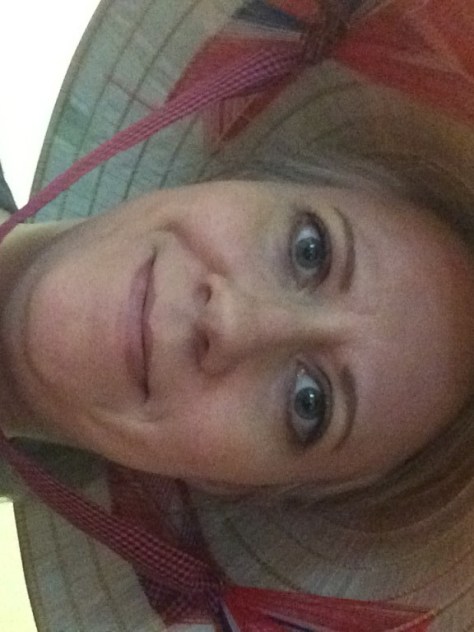
“When did you first realize that room was unique? That not many houses had one?”
I was in a session at NCTE and had written about a special place on the direction of the presenters. All of us participants were asked to share our special places with others, and this woman and I were the only ones in in the front right corner of the room. We exchanged those glances that said “Do you want to be my partner?”
I read her a little something I had written up, and she asked me those questions. I had never thought about it, but she was right. That room was unique. I didn’t know anyone else who had a sewing room in their house. My grandmother was, as she always described herself, a seamstress. When I was a child, I used to go to her house every day after school until my mother’s workday ended. I usually sat at her coffee table and did my homework. All the time, the burr of her sewing machine could be heard in the background, and there was usually a visit from a customer or two. She did everything from alterations to wedding dresses.
When I was at Kenyon last summer, we did a wonderful place exercise in which I wrote about that room, and ever since that writing activity, that room has been a deep well of inspiration for me. I wrote a zuihitsu poem about it, which I won’t share here because I would like to try to publish it—rules about prior publication are pretty strictly defined to include personal blogs. I have returned to that to room many times. I can see it so vividly.
Granna had several sewing machines, but the ones I remember being set up when I was a child were a metallic green Rex, a newer Bernina, and a Juki serger. She also had a complicated-looking ironing apparatus. The iron was always hot and was attached to a large steam bottle that looked like an overlarge IV. She had a large table in the corner. It was covered with fabric. I don’t think I ever saw its surface. She had stacks and boxes of old patterns. Many of the patterns featured on the McCalls Pattern Behavior Tumblr wouldn’t have been out of place in her collection. There was an area to the right of her Rex, which was her main sewing machine at the time. A small table nestled between her sewing table and the large fabric-laden table against the wall; here Granna kept spools of thread and trays with bobbins, pins, needles, sewing machine feet, buttons, and every kind of sewing notion you can think of. In second grade, I had made her a memo board with woodgrain contact paper and my picture—grown out perm and overlarge permanent teeth coming in—framed in pieces of lace. It still hangs there, next to her machine. I could usually find stale pieces of Freedent gum on that table, too. The floor in that room was black tile, pitted with scars from the wheels on my grandmother’s chairs as she whipped around the room from machine to machine.
It is probably the place I associate most with my grandmother because it was where she spent most of her time when I was a child. I used to go back and visit her in the room. Often she would be humming. When asked her what she was humming, she always said she didn’t know. She usually had two or three straight pins sticking out of her mouth for safekeeping.

She could fix a tear or a hem in nothing flat. In the years she was still actively sewing, you could turn anything she made inside out, and it would be lined and the seams would be straight, rough edges serged and neat. There was no flaw in anything she made. I only came to appreciate the craftsmanship and learning her skills took when I tried to learn to sew myself and put one of my pockets in backwards in the shorts I made and sewed my top too tight to wear. I do remember going through a period when I wanted store-bought clothes because I was desperate to fit in and wear the same kinds of jeans and jackets as the other kids wore. By the time I was an adult, I appreciated the love that went into the clothes my grandmother made. She used to sew little tags into the back of anything she made for me:
Made Especially for You by
Granna
When I last visited my grandparents, I was able to interview my grandmother about her career and hobby as a seamstress. I hope you enjoy the digital story I made.
 Slice of Life is a daily writing challenge during the month of March hosted by Two Writing Teachers. Visit their blog for more information about the challenge and for advice and ideas about how to participate.
Slice of Life is a daily writing challenge during the month of March hosted by Two Writing Teachers. Visit their blog for more information about the challenge and for advice and ideas about how to participate.















